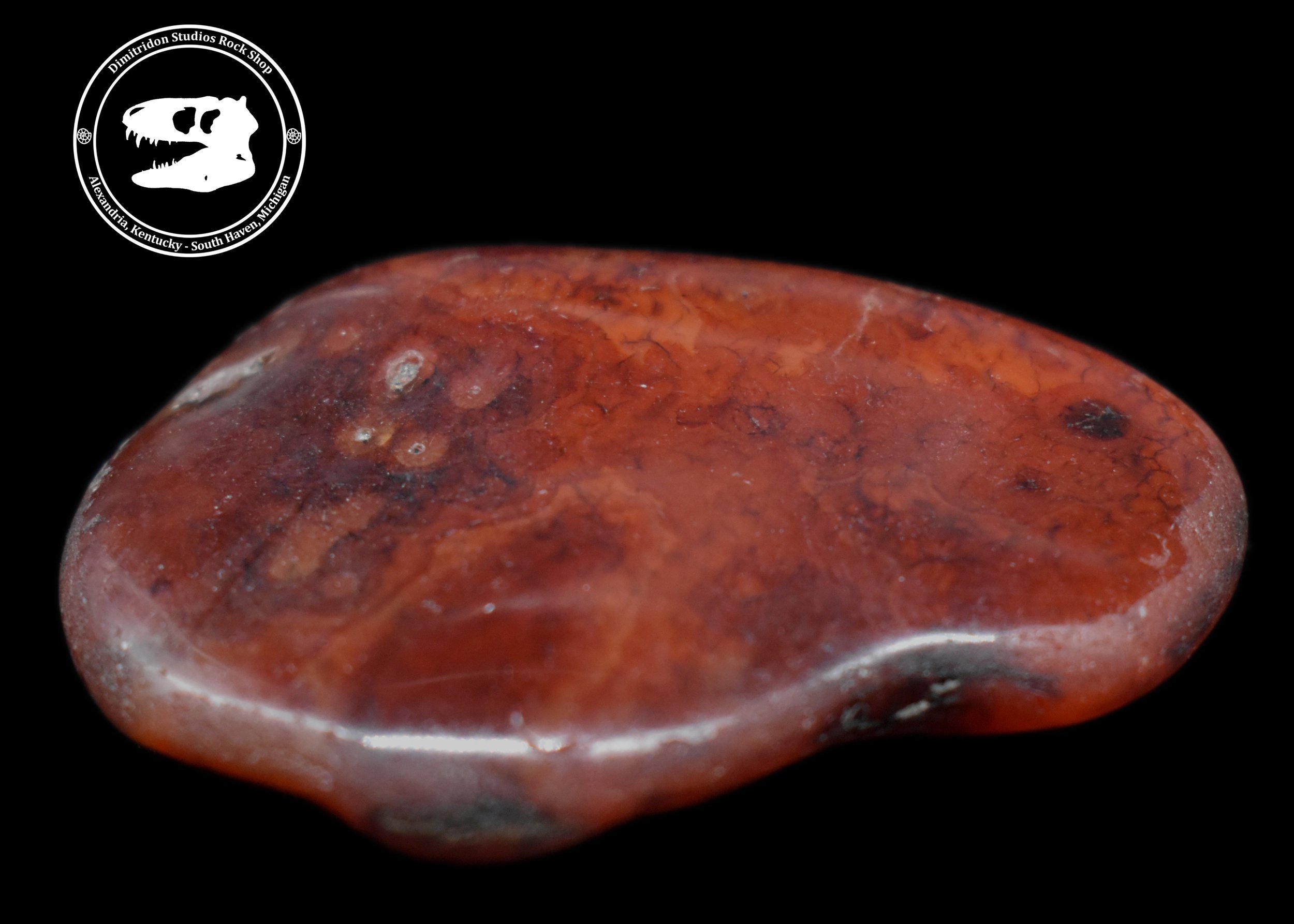
Rock of the Month April 2022
Carnelian
Carnelian is a stunning red agate that can be found all across the United States from Rhode Island to Arizona. Agate is made of layers of Chalcedony, which is a Cryptocrystalline form of silica. Cryptocrystalline is used to describe a mineral or rock with a crystal structure that is only visible under high magnification. Chalcedony is made of incredibly small interwoven Quartz and Moganite structures. The percentage by mass of Moganite can be as high as 20%. The solubility of Chalcedony in water is significantly higher than that of Quartz, allowing it to have a faster rate of deposition, which leads to finer banding. Carnelian gets its iconic red color from iron - or more specifically, hematite is colloidally dispersed throughout the layers as they form. A colloid is a type of homogeneous non-solid mixture in which large particles of one substance are dispersed throughout another (such as gels and emulsions including oil-based salad dressing). This dispersion is why the banding of many agates have a consistent tone in each layer.
Evidence has been found of people using Carnelian as far back as the Early Neolithic. Ancient Romans and Assyrians used Carnelian engraved gems for signet rings and cylinder seals, and Egyptian and Phoenician nobles valued Carnelians in scarabs. The stone also holds a place of value in various religions including Neo-Assyrian, Judaism, and Christianity. The name Carnelian is widely believed to be derived from the Latin word cornum - the Cornelian cherry, whose translucent red fruits resemble the stone. Some scholarly sources debate that the name instead is derived from the Latin word carnis (flesh).
Carnelian is believed to encourage powerful creative instincts and vital energy. It can serve to strengthen one’s confidence and esteem, or motivate one to put important plans into action with passion and confidence.











